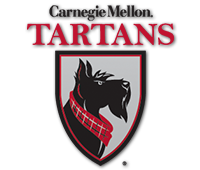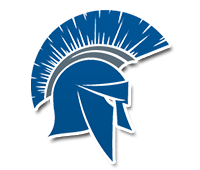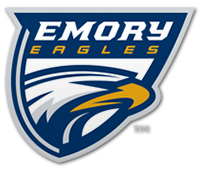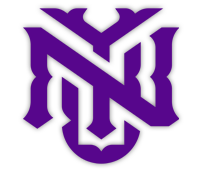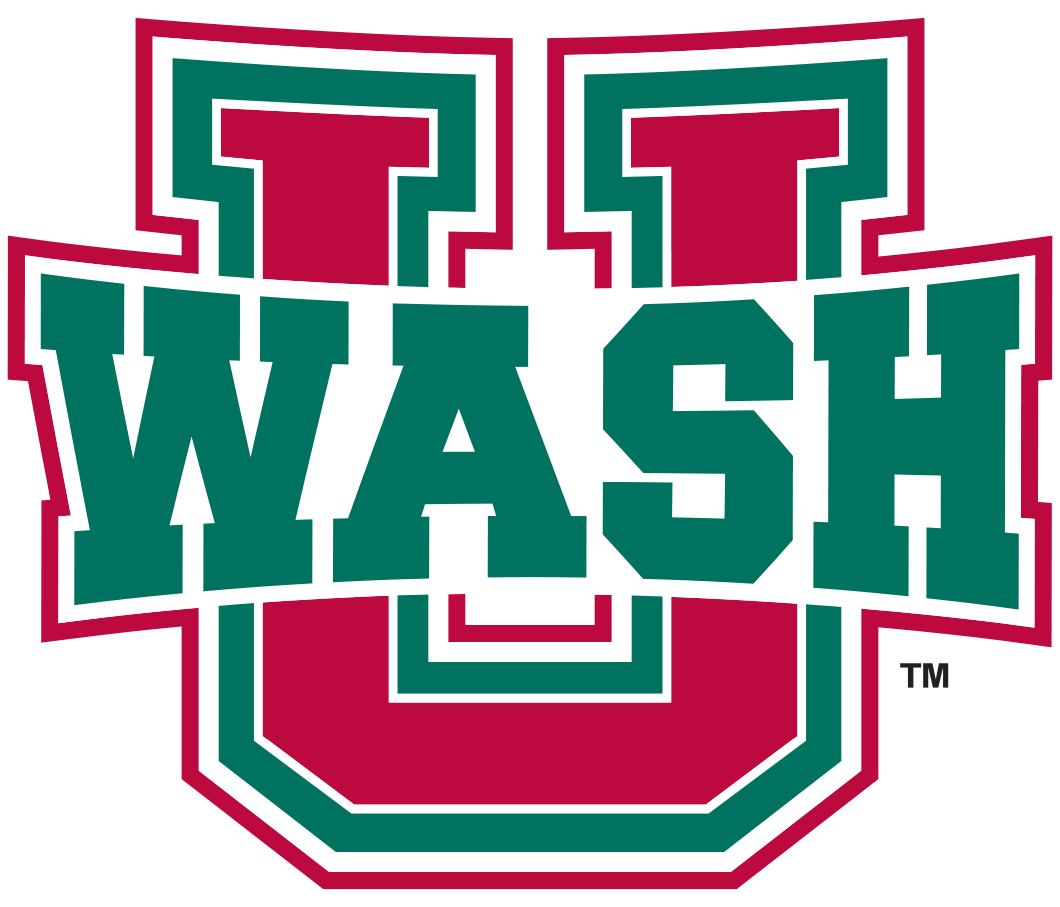
Photos courtesy of Naji Saker (https://www.najisaker.com/)
As hosts of the annual Battle of the Obelisk, the Case Western Reserve University track and field team knows that it will bring in its greatest rival, Carnegie Mellon University, early in the indoor season. While it may not be a time to be thinking about NCAA qualifying performances, the meet serves as an intense competition featuring two similar programs and academic institutions.
THE IMPORTANCE OF THE MEET
“Everyone hyped it up so much when I was a freshman. I just remember thinking, ‘There is no way it’s that great, it’s just a meet,’” recalled 2019 graduate Olivia Newman, who finished her career with 10 top-two individual finishes in the Obelisk. “Boy, was I wrong. There is no other meet where the energy levels are so high and every member is engaged. You hear either your teammates or Carnegie Mellon’s rooting. It’s something you don’t understand until you are part of it.”
“The nature of this competition is the most unique thing. We did a lot of dual meets in high school, but you don’t see that much in college,” said senior Dominic Oddo, who has earned four individual and two relay titles with a combined 12 top-three finishes at the Obelisk in his first three years. “It is a uniquely competitive atmosphere that creates what we are seeing now between these programs. The meet is so notable for competing directly against just one team.”
Cassandra Laios, who capped her career in 2019 by winning the hammer throw at the NCAA Division III Outdoor Track and Field Championships, won the shot put in all three seasons she competed at the Obelisk after coming to CWRU primarily as a swimmer. “Our track is set up so that everything is very close together. It is faster than a regular meet so it is not draining keeping up the energy the whole meet,” she stated. “It comes from the intensity of wanting to beat Carnegie Mellon.”

“It is, by far, the most intense meet I have ever been a part of. It’s that high school dual meet/tri-meet feeling that you see every week. It is so much fun, just you and another team,” remarked 2017 graduate and current assistant coach Nate Wahner, who won three individual events and finished second in another three during his three Obelisk appearances. “It seems to almost always come down to 10 or 15 points. You can see the energy right from the start when someone has a great long jump or triple jump and see it throughout the day.”
“One of the things going into the first dual meet that was really different for me was that it was so focused on scoring points for the team. Track and field tends to get treated a bit like an individual sport rather than racing the people beside you,” commented 2018 graduate Rachel Willard. “I loved how intense everyone was about trying to get points here and there, and that the most important thing wasn’t an individual performance, but how the team did as a whole.”
“The meet is quick and the races are fairly small. This is really the meet that is the start of our biggest meets like UAAs and All-Ohio,” stated 2013 graduate and current assistant cross country and track and field coach Chris Kelly. “In my freshman year, the veterans did a great job of letting us know how important this meet is. They told us, ‘We have to win this and do the best we can to do that.’”
“I had heard from upperclassmen that it was an incredibly exciting event full of team spirit and great competition,” expressed 2018 graduate Danielle Kulpins, who captured five Obelisk individual titles combined in the 3,000- and 5,000-meter runs. “The event definitely lived up to that hype. It was the most unity I ever experienced on a track team.”
THE TEAM CULTURE
The early-season timing of the meet gives the Spartans a chance to get to know their teammates better and cheer for one another, particularly with the combined men’s and women’s scoring.
“Because it is relatively early in the season, this meet serves as a gauge of where we are and the team dynamic. We are seeing one another in a competitive atmosphere for the first time, or nearly the first time, after all the training we put in during the fall and winter break,” Laios explained. “The combined score to be champion of the meet is a great thing. We emphasize that we are on a team that has to compete differently, not as a men’s team and a women’s team. We focus on everybody.”
As time went on, Willard saw not only the importance of contributing to the team’s scoring, but also of being a leader. “I think the leadership I came into the team under set a really clear tone of how we should treat the dual meet in terms of sportsmanship, supporting our teammates, and maintaining the intense atmosphere,” she recollected. “I hope that is the kind of tone I continued to set as a veteran member of the team. When you have younger teammates that come in and perform, it’s important to be there supporting them and encouraging them to do their best and to be that kind of a leader to the student-athletes who join the team after them.”
“Having only two teams makes it so personal. There isn’t a cloud of mess in the middle and that emphasizes the team aspect,” Newman contributed. “UAAs is the only other time that such a team atmosphere comes out. Every other meet is more individual, me improving my marks to eventually come together at the end of the season. This meet is not about me and my times. It’s not about times at all. It’s about competition, about beating the other team.”
THE PRE-MEET HYPE AND T-SHIRTS
Two traditions that have occurred most years of the Obelisk are the team dinner the night before the meet and t-shirts designed specifically for the meet.
“I am so proud of the t-shirts and they are a true representation of what our program strives to be,” Newman commented. “We want to be successful and win, but we also want to have fun along the way and with each other. They bring the team together in a genuine way. Our shirts represent our unity to each other and against Carnegie Mellon.”
“We had a giant wooden hammer, about four feet tall and pretty big. After dinner, we did a big countdown and then smashed a melon with the hammer,” Newman added. “It sounds a little insane, but it was so hype! The first year we did this, the melon splattered radially across everyone, creating a huge mess.”
“The shirts are definitely part of the lore of this meet,” Wahner expressed. “In my years there, everyone was all in on the t-shirts. People on the team would submit the designs and we would all wear the winning one to the meet. We loved it and so did the Carnegie Mellon athletes.”
“The team dinner the night before got us in the mindset of being in a battle. My favorite part was the saying, ‘Spartans, what is your profession?’ from the movie 300 (a retelling of the Battle of Thermopylae),” Laios disclosed. “We were all getting ready to give our all and it was a great thing to experience.”
Not that junior Trey Razanauskas needs much assistance getting excited about competition, but he saw how important the meet is to the team at the pre-meet dinner last year, his first Obelisk experience after transferring to CWRU before the 2018-19 cross country season. “The meet was really hyped up. I was really excited to compete,” he described. “Unfortunately, our performance was underwhelming. I am again very excited as I have seen all the effort we have put in and everyone is looking forward to showing off what that work has produced.”
BACK-TO-BACK TITLES
After dropping the Obelisk in 2013 and 2014, the Spartans had lost three of the last four meets between the two schools. The Spartans turned the table by evening the series at 4-4 with their own back-to-back wins in 2015 and 2016.
2015 marked Willard’s first time in the Obelisk. “The coaches and captains did a fantastic job of getting us hyped up for the meet,” she recalled. “The meet ended with the men setting the school record in the 4x400 and us winning the Obelisk for the first time since 2012. You could see the impact that had for the seniors and that excitement carried down through the whole team.”
Willard heard that before her time on the team, Carnegie Mellon won the event one year and while taking the usual victory lap around the track with Obelisk, they were saying, “This is our house!” In her sophomore year, Willard and her teammates won their second consecutive title. “We did the same thing, saying ‘This is our house!’ during our victory lap,” she revealed. “That’s part of what made that year such a special win for the team.”
“My favorite memory is the 4x400 race at the end. All the other events have finished so everyone is focused on the racers,” Kulpins recounted. “The entire track is lined with people cheering and the fieldhouse erupts with sound. It’s even more exciting when the final race determines the winning team.”
Newman, who began her Obelisk career in 2016 with a pair of second-place finishes and a third-place finish, echoes Kulpins’ thoughts on the final relay. “The women’s 4x4 was what stands out the most for me. The meet was decided before the event, but it made no difference. The entire track was filled with both teams and the entire race was never more than a few meters apart,” she recollected. “I remember screaming every time they came by and pacing in anticipation, waiting for my turn to run. I wasn’t thinking about my race, but about my three relay teammates. Never do you believe so much in others as you do in this meet.”

“When it was my turn to run, there were no thoughts in my head besides, ‘I will win. You will not pass me.’ Pain did not matter. Legs did not matter. Winning did. Not for me, but for them, for the team,” Newman continued. “Every meter of the track was filled with someone as invested as you are. The last 50 meters were filled with teammates on both sides, like a tunnel effect. Both teams were feeding the other’s motivation and energy until the last moment. Winning that race was a paradox of feelings. As with any 400, I couldn’t breathe, my legs were heavy, and in pain, but I was immediately rushed by teammates. The four of us didn’t win. All 80 of us did.”
In the 2016 win, Laios captured the shot put title, but wasn’t around for the finish as she had to return to the pool, where she was swimming as part of the team’s senior day celebration. “I was glad I was able to contribute while I was there. I remember getting out of the pool to compete in the meet,” she laughed. “It was really cool to hear that we won.”
“That was definitely my favorite memory. We gathered as a team and the captains were given the Obelisk trophy,” Willard recalled. “We took a lap around the track as a whole team with it. I still have the photo of that moment up on my wall. The whole team is crowded together with huge smiles on our faces. It was just a really powerful moment.”
“Winning it my junior year (2016) stands out the most. It was such a big team win from top to bottom, and everyone was involved,” Wahner described. “We had great performances left and right. It was so meaningful because of the people we won it with. My sophomore year, it came down to the 4x4, both mine and (CWRU head coach) Eric’s (Schmuhl) favorite race, and we pulled it out. It is so much fun to be involved in. No matter how much of an underdog one team may be, it comes down to who wants it more.”
That year not only marked the second consecutive team win for CWRU, but it’s eighth time in as many years with the higher women’s score. No one realized at the time how much things were about to change.
RECENT FRUSTRATION
The Spartans have dropped each of the past three Obelisk meets, including its first two setbacks on the women’s side (2017 and 2019). The weight of the drought is not lost on Oddo, who competed in seven events in last year’s meet. “There has been a lot of disappointment having lost the last three years. It has been a bitter event so far,” he claimed. “Being in so many events, I am just doing what I can to help the team as everyone is. Our energy is a result of everyone doing everything they can to beat Carnegie Mellon.”
Even one of Oddo’s most successful moments came with stress, thanks to his very tall teammate Grant Mlack in 2018. “Just before we were about to run the 60-meter hurdles, Grant gave me a huge slap on my back to get me hyped for the event. I was in so much pain,” Oddo divulged. “We finished 1-2 (with Oddo first) in that race, but it was so painful!”

Junior Trey Raznauskas was not happy with last year’s defeat and made it known to Schmuhl afterwards. “I told him we can’t let this happen again. It was embarrassing,” he stated. “I said, ‘Listen to me, we are going to win it!’ Whatever the team needs, I will do it. There is such a sense of pride with our team and this meet. You just don’t get these matchups in track. This is like a football or basketball game. Being home, we have to defend our home track.”
“The general feeling of high energy and competitive spirit in this meet brings a lot of highs and lows,” Oddo added.
RELATIONSHIP WITH CARNEGIE MELLON
Through victories or defeat and the intensity of the Battle for the Obelisk, the consistent theme of the student-athletes on both sides is the camaraderie between the two programs despite the fierce competition between them.
In what Oddo calls a testament to how close the teams are, he set a personal-best with a mark of 1.90 meters in the last event of the meet last year in the high jump. The first person to congratulate him, with a high-five, was Tartans’ head coach Gary Aldrich.
“We compare ourselves to Carnegie Mellon in terms of academic rigor and athletically. We see ourselves as close competitors and get to see them a lot in other competitions. There is no hate between the schools. We are ultimately trying to do the same things in the UAA and in other meets,” Oddo explained. “I have developed relationships with the Carnegie Mellon team. I’m not the kind of competitor to take if off the track. I compete with a positive spirit for both teams.”
Willard appreciated the friendships that developed, particularly with those competing in similar events. “I love that I got to know some of the Carnegie Mellon athletes well over the years. They are the team in the UAA we see most often so we get to know their athletes better,” she revealed. “I became closest with one of their jumpers, Autumn Hair, and we went back and forth beating each other at UAA meets, sometimes by one centimeter. We joked around with each other at meets and created a strong bond at the UAA meets, where we would root for our team first and then the Tartans second."
Like several other student-athletes at both schools, Laios considered attending each school before eventually choosing CWRU. “That plays into the competition because you know plenty of students were looking at both these schools that have similar level track programs,” she explained. “We have a similar mindset in that we are focused on our studies.”
“It’s a weird dynamic during the week of the meet. We have a lot of respect for each other, but we both want to go home with the Obelisk so one week a year we don’t like each other as much,” Wahner stated. “Whenever we got to the UAA meet, Carnegie Mellon was always the team I connected with the most.”
“One of my favorite aspects of the Battle of the Obelisk is the team spirit, both from CWRU and Carnegie Mellon. Both teams take such pride in their performances,” Kulpins expressed. “Every event counts. Every person counts. The cheering and support exemplifies the pride and excitement from both schools.”
“Coming out of school, I couldn’t have gotten into CWRU or Carnegie Mellon. I wasn’t academically oriented until recently. Two top-tier universities with comparable track and field programs competing in a dual meet is an honor to be part of,” Raznauskas admitted. “I really appreciate the UAA and feel a sense of honor representing the UAA in any competition.”





